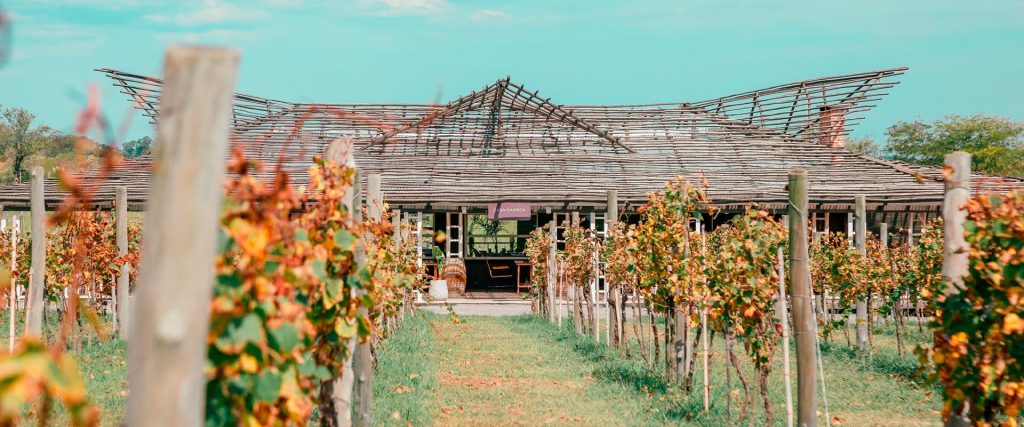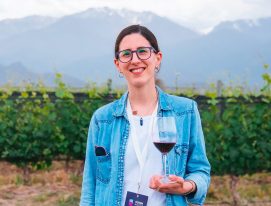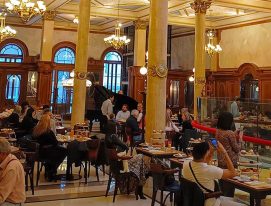Five hectares of vineyard, a beautiful natural landscape, poplar trees and a lagoon, as well as a cozy 350m2 wine house with its own wines, an underground cellar, a restaurant serving auteur cuisine and even a gallery in the middle of the vines. All this and more is to be found at Bodega Gamboa, a dream that began just over ten years ago, which has now consolidated itself as an attractive destination for visitors just an hour away from Buenos Aires.
In 2012, Eduardo Tuite – who is originally from a farming family in Santa Fe –, having worked for years in tourism, decided to develop a winery in a place most people would never have considered: the Province of Buenos Aires.
“We chose the location because the soil analysis showed that it would be suitable for viticulture. And also because of the stunning landscape; we’re surrounded by the Otamendi Natural Reserve (wetlands considered of national importance),” says Tuite.
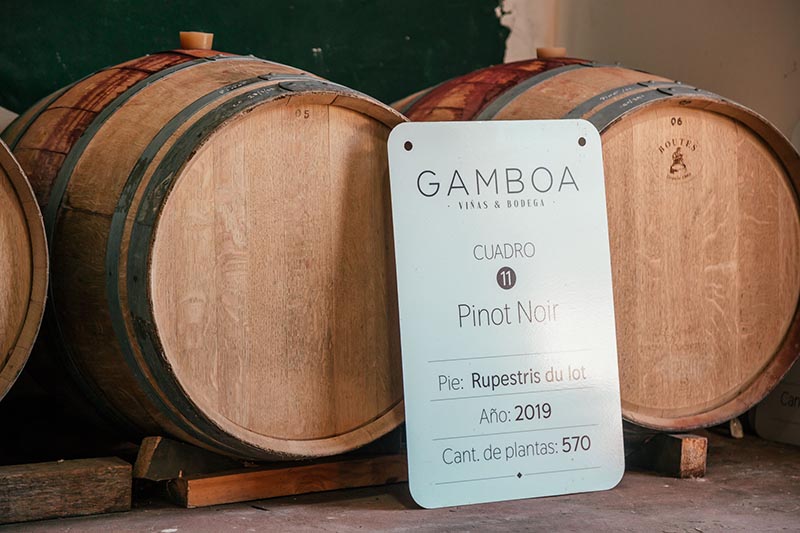
The wines of Bodega Gamboa Viñas
The winemaking is overseen by an agricultural engineer specialized in Viticulture and Oenology, Gabriela Celeste, who is originally from Mendoza and worked for more than twenty years as the Director of EnoRolland – the laboratory of the famous French oenologist Michel Rolland, which she now owns. They are also advised by Enrique Mirazo, a Uruguayan agricultural engineer with extensive experience in Uruguay and the south of Brazil.
Today, the prestigious team at Bodega Gamboa produces three varietals – Cabernet Franc, Pinot Noir and Malbec – sold under that name at the restaurant and store, where they also offer a house vermouth and a Malbec-based gin.
“The fact is we were able to grow some lovely vines,” says Tuite, although he admits the process “was very difficult, we had to adapt to work with the damp conditions, the ants and the birds, which devoured the vines. But we were able to establish a sustainable plantation with low environmental impact because our objective is to produce high quality wines while also preserving the environment.”
Limited editions
“We’re getting to about two thousand bottles a year and the truth is that it’s not enough to meet the demand at the restaurant. So we decided to form partnerships with oenologists such as Santiago Achával, Karim Mussi and Agustín Lanús to produce small batches of bottles under our label, so you can also enjoy Bodega Gamboa wines from different parts of Argentina.”
This line is called “Terruños Únicos” and includes a Pinot Noir and Semillón from different regions of Mendoza and a Torrontés and a Malbec from the Calchaquí Valley in Salta. All these wines can be enjoyed paired with the food served at the restaurant.
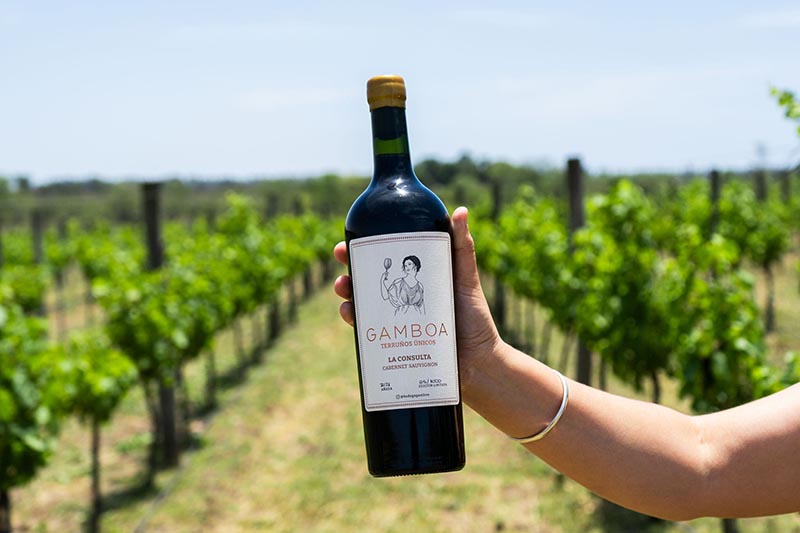
Gamboa: a sensory experience
The Casa Gamboa restaurant is run by the Irish chef Edward Holloway – who has extensive experience in hotel and wine-based dining – and offers visitors two options.
The first is a quick, lighter menu called “Experiencia Origen” in which tapas style dishes are served in the center of the table to share. The second is a menu with several courses called the “Experiencia Terruño” which includes dishes cooked over a wood fire paired with 4 glasses of house wines.
The underground cellar at the restaurant hosts tastings and also activities such as gin masterclasses, among other activities.
“The idea is to provide activities that make your day in the country complete,” says Tuite, outlining the Full Day option which includes a tour of the vineyard, the warehouse where the wines are made, a tasting in the cellar and lunch in the main hall.
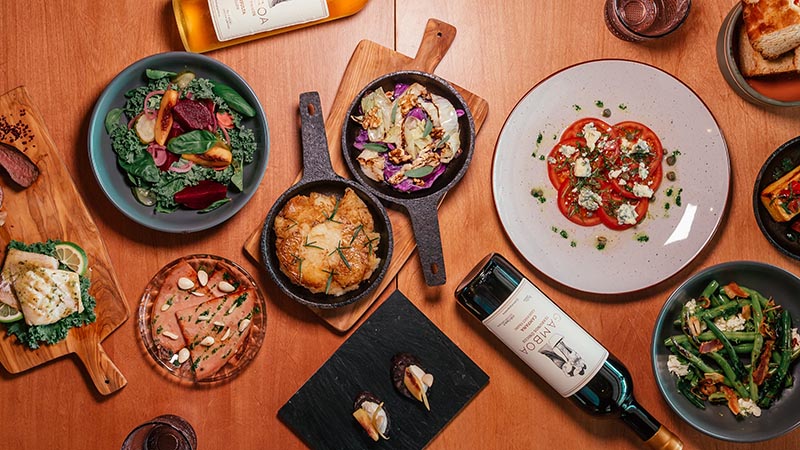
Buenos Aires rediscovers its viticultural heritage
Tuite says that tourists (especially Argentinian ones) tend to arrive with low expectations about wines from the Province of Buenos Aires. This can be explained by the history of wine production in Argentina.
Viticulture was once a major industry in Buenos Aires until, in 1930, it was forbidden to produce wine outside the Cuyo region and the Andean provinces to the north, a law that was only repealed in 1990. Vines began to reappear in the province in the 2000s.
Today, the Province is making great strides: several producers have formed a chamber in which they share information and provincial legislators have established a scheme of incentives to promote production, oenotourism, work and commerce in the sector called the Law of Buenos Aires Wine.
“The good thing is people are always pleasantly surprised by the wine. When it’s paired with the cuisine and overall experience, it makes for a high class day out.
“I think that our wines will always be distinctive, with a local character. Some varieties will work better closer to the sea and others in the pampas. Our identity is still evolving. But it will undoubtedly be quite diverse because it’s a big province.”
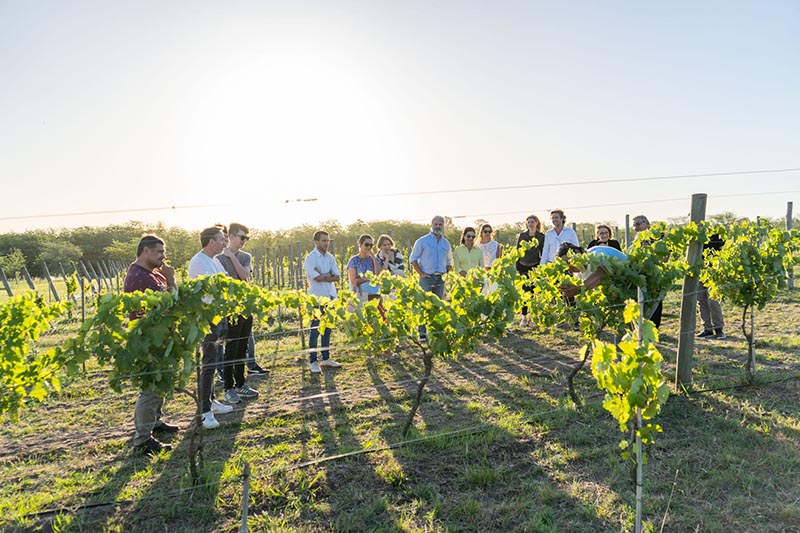
Challenges for 2023
In addition to the continued expansion of the project to include new varieties and more coastal vineyards in the area of Pinamar, Bodega Gamboa are working to build a new winery in Campana, where they hope to produce about 20,000 liters of wine a year.
“The project is to build a fully comprehensive, modern, ecological winery. We’re working to achieve energy efficiency, effective waste management and the reduction of our carbon footprint. Also, we want to provide a really enjoyable visitor experience for everyone regardless of their auditory, visual, cognitive or physical limitations. And we’re training hard to make sure that we’re up to the challenge.”
Finally, they’re also continuing with the Mi Finca Gamboa project in which wine lovers are offered the unique experience of taking charge of an exclusive parcel of the vineyard and getting involved in activities such as tending to the vines, the harvest and the winemaking itself.
Directions to Gamboa Viñas & Bodega: https://goo.gl/maps/5SBag5jNQrsi8Jwd7

